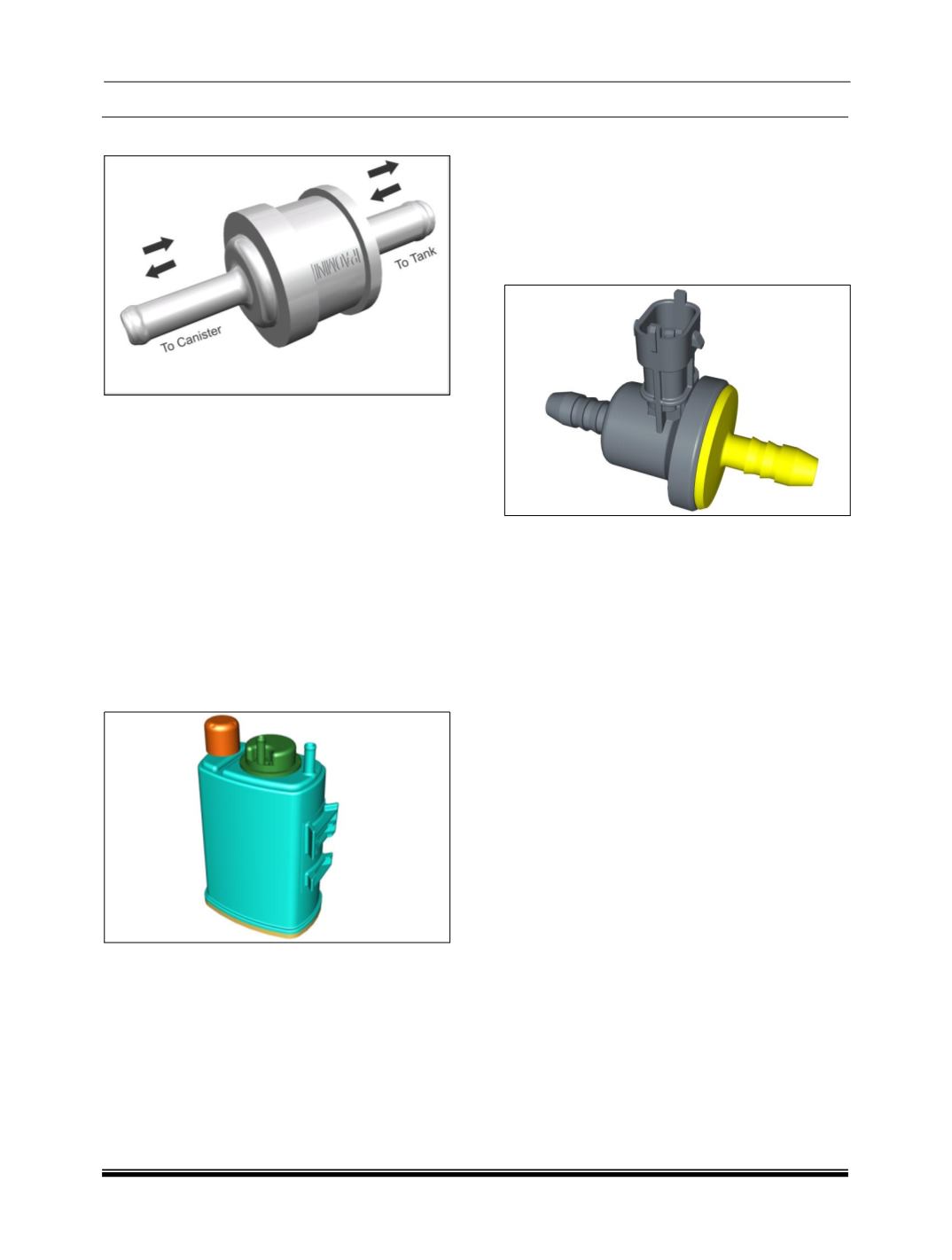

1.2L REVOTRON ENGINE
88
5. Tank Pressure Check Valve
The tank pressure valve is provided to keep the
pressure in the fuel tank constant. The valve
operates according to the pressure inside tank.
1. The tank pressure valve opens out when
pressure differential occurs between the tanks
side and canister side ports and allows vapour
from the tank to carbon canister. When the
pressure inside the tank becomes positive and
exceeds on established level of 1 – 1.5 Kpa valve
opens out.
2. When the pressure in the fuel tank becomes
negative (vacuum) and reaches it specified value
it open the valve to let the air flow in the fuel tank
via canister.
6. Canister
Canister made of high grade Nylon, containing
special dust free activated carbon is used to
adsorb fuel vapours. The lower end of the canister
is open to atmosphere for ventilation. The end is
not really open but there is foam filter. The
purpose of the bottom filter is to protect the
canister from dust and dirt during operation. When
the engine is inoperative (i.e. while parked) fuel
vapours generated inside the fuel tank due to fuel
volatility are absorbed and stored in the canister
through tank pressure valve.
When the engine is running, the fuel vapours
absorbed in the canister are purged into intake
manifold through canister purge valve operated by
ECU. The purging takes place due to air drawn
through the canister because of pressure
differential between manifold vacuum and
atmosphere.
7. Canister Purge Valve
The canister purge valve is controlled by engine
management system (EMS).
The purging of canister takes place because of
pressure differential between manifold vacuum
and atmosphere. Fuel vapours are drawn into the
intake manifold through canister purge valve
operated by ECU.
Inspection:
1. With ignition switch OFF, disconnect
connectors from canister purge valve.
2. Check resistance between two terminals of
canister purge valve. Resistance 26 + 4 ohm
at 200C. If resistance is as specified, proceed
to next operation, check. If not, replace.
3. Blow air into hose removed from T connector.
4. Verify that no air flows through the valve
when the engine is stopped with purge valve
connectors disconnected.
5. Air will pass through freely when the 12V
battery voltage is applied to valve connector.
It indicates that the valve is functioning
properly.
If no air flows, replace the valve.
6. Reinstall valve connector.
7. Reconnect vacuum hoses.
Warning:
Do not suck air through purge valve. Fuel vapours
inside valve is harmful.










